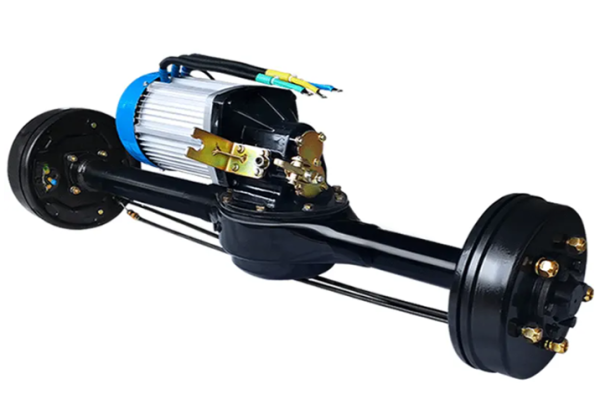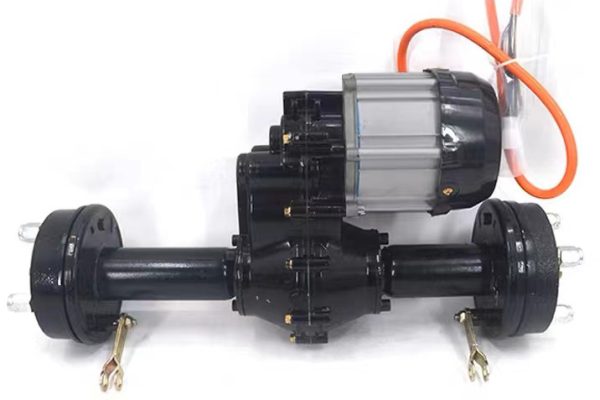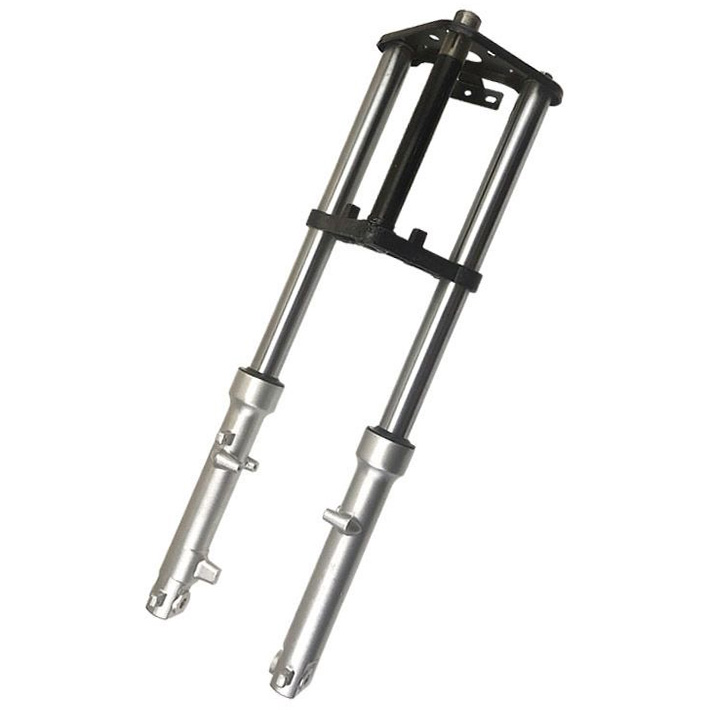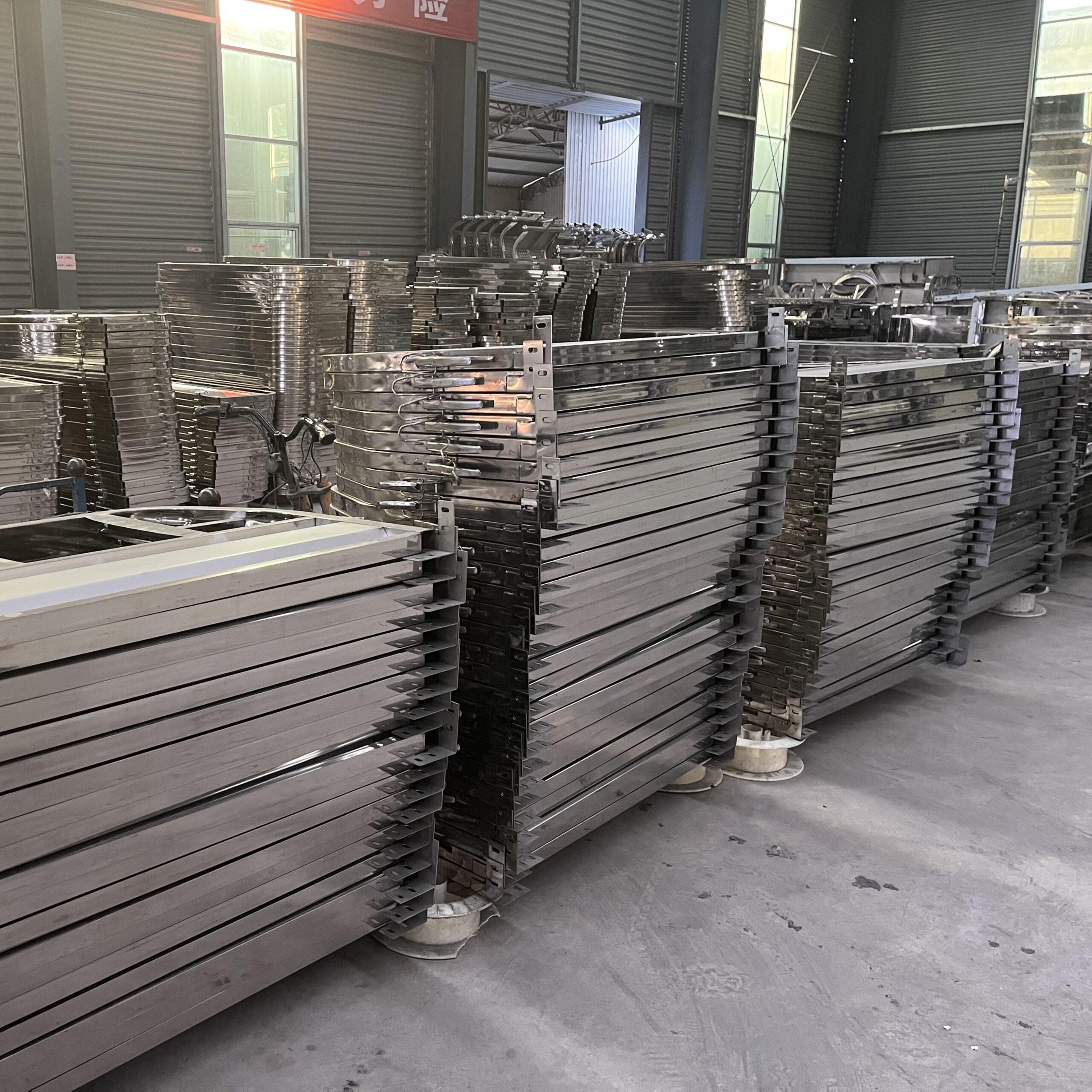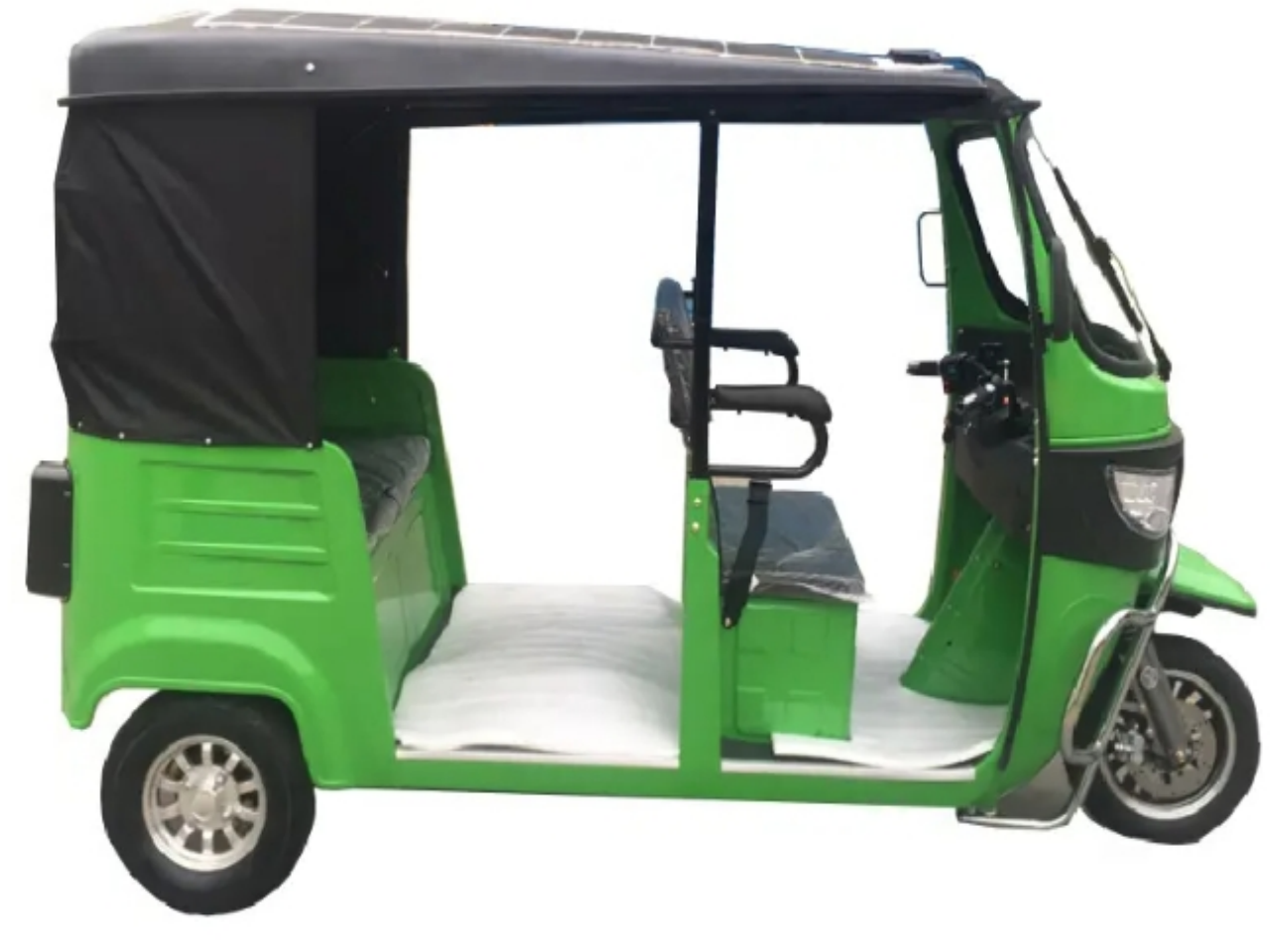
Your Electric Rickshaw Manufacturer
Welcome to our dedicated page for electric rickshaws. As a premier electric rickshaw manufacturer, we pride ourselves in providing an in-depth understanding of this sustainable mode of transport. Dive deep into our resources and discover the innovation, craftsmanship, and dedication behind every rickshaw we produce.
Table Of Contents For This Page
To make sure you can find the information about all aspects of electric richshaw tricycles you want quickly, we have prepared this content directory that will jump to the corresponding location when you click on it.
Driving System: Powering the E-Rickshaw Tricycle
The drivetrain is the powerhouse of the electric tricycle. A well-engineered drivetrain provides efficient power transfer, ensuring optimal performance across various terrains and load conditions.

Motor Details
Power and Type: The choice of motor power and type directly influences the tricycle’s efficiency and overall performance. Common types of motors used in electric tricycles are:
- Traditional Brushed Motors: Classic in design and budget-friendly, yet may demand more upkeep due to lesser efficiency compared to brushless variants.
- Modern Brushless Motors: They boast a superior efficiency and extended longevity. Their enhanced torque at lower speeds makes them an ideal choice for cargo tricycles. Presently, our factory equips all electric vehicles with brushless motors for outputs under 2000W.
key Parameters of the Motor
Motor Power Impact: Your selection of motor power and variety plays a pivotal role in determining the tricycle's effectiveness and overall ride experience.
| Rated Power (W) | Recommended Usage Scenarios |
|---|---|
| 800W to 1000W |
Usage: Suited for smaller-sized electric rickshaws. These motor capacities are on the lower end for passenger electric tricycles. They're not ideal for typical large passenger load scenarios but more for home leisure use or small electric rickshaws meant for shorter distances.
Recommended Scenario: Ideal for lighter loads, such as individual transport or light leisure activities within neighborhood settings or parks. |
| 1000W to 1200W |
Usage: This is the most common range for electric rickshaws, striking a balance between performance and affordability. Rickshaws within this wattage range can comfortably accommodate 4-5 passengers. Recommended Scenario: Best for urban or suburban areas with moderate terrains. This motor strength can manage regular passenger loads, making it the minimum requirement for daily commercial use. |
| 1500W to 2000W |
Usage: These are high-performance motors designed to tackle challenging terrains and higher passenger loads. They provide additional power for uphill climbs and rough paths. Recommended Scenario: Ideal for hilly regions or areas with uneven terrains. Suitable for busy routes with a constant flow of passengers, ensuring both speed and efficiency. |
| 2000W and Above Motors |
Usage: The pinnacle of power in electric rickshaws, these motors are designed for the heaviest passenger loads and toughest terrains. They can provide faster speeds, making them apt for longer routes. Recommended Scenario: Perfect for transporting maximum passenger loads over extended distances. Especially beneficial in areas with demanding terrains or for those looking for higher speeds without compromising on load. |
Torque (Nm) Defined: Torque represents the essential "force" propelling a vehicle into motion or assisting it uphill.
Think of torque as the electric motor’s “strength,” crucial when initiating motion in the electric tricycle or tackling uphill challenges.
A greater torque value indicates that the tricycle can manage steeper ascents and bulkier cargoes without overexerting the motor. Imagine having a robust colleague assist in pushing a hefty trolley uphill. For level terrains, average torque works fine. However, if your routes often involve hills or transporting heavy items, a high-torque motor becomes essential for consistent, optimal performance.
Even when two motors possess identical power, their torque can differ, leading to variations in the performance of the electric tricycle.
Typically, a bigger motor means more wattage and increased torque. While choosing between 800W and 1000W motors might not present a notable price gap, there’s a discernible difference in weight and dimensions. Motors with greater size, like the 1000W, perform more robustly, particularly on challenging road conditions.
Speed (RPM): The rotational speed sets the tricycle's maximum velocity.
Although a higher RPM typically equates to faster top speeds on electric tricycles, real-world performance also hinges on aspects like the transmission, the tricycle’s weight, and the load it carries.
Choose AGL, and we will guide you in selecting the complex motor power and types, ensuring your vehicle achieves optimum efficiency and performance.

Controller Details
Serving as the drivetrain’s command center, the controller modulates the current supplied to the motor according to the throttle’s prompt. Its significance extends to regulating acceleration and maximum speed.
Protection Functions: These include safeguards against excessive current, undervoltage, and overheating.
key Parameters of the Controller
When choosing a controller, ensuring it aligns with the motor type is vital. For instance, a sine wave motor requires a matching sine wave controller.
Peak Current (A): Indicates the maximum power the controller can deliver to the motor.
Voltage Compatibility (V): Should be in sync with the battery’s voltage.
Categorized by Voltage: Options include 36V, 48V, 60V, 72V, etc., with 60V being the predominant choice.
Classified by the number of power transistors: There are 15, 17, 18, 24, 36, etc. different numbers. The more the number of power transistors, the larger the matched motor power, leading to stronger output power, higher price, and greater power consumption.
- 18 & 24 Transistors: Commonly used in many electric tuk-tuks, these controllers provide a balance between speed, performance, and efficiency.
- 36 Transistors: Best suited for electric tuk-tuks with higher motor power, these controllers deliver top-tier performance, although they might be more expensive and consume more power.
Choosing a controller with the appropriate specifications, we can ensure the motor receives the correct current, optimizing the acceleration and top speed of the electric rickshaw.

Choice of Rear Axle
The rear axle is crucial to an electric passenger tricycle’s performance. It offers stability and balance, ensuring smooth and steady rides across diverse terrains. Choosing a quality rear axle bolsters your electric passenger tricycle’s dependability, making each journey secure and pleasant. Your selection guarantees that every trip is a fusion of efficiency and safety.
Protection Functions: The rear axle is essential for balance and stability
Integrated Rear Axle (with Differential)
Advantages:
- Strength and Durability: Designed to handle heavier loads, making it ideal for electric passenger tricycles that require substantial load-bearing capacities.
- Reliability: Fewer connecting parts translate to increased durability and fewer breakdown chances.
- Efficiency: Simplified design means quicker and easier installation, beneficial for large-scale manufacturing and repairs.
Disadvantages:
- Maintenance Complexity: If components like the differential need attention, addressing the entire axle unit might become necessary.
- Size: The integrated axle, being bulkier, might be less suited for smaller 2-3 passenger electric tricycles.
- Cost: Generally, it tends to be pricier than the segmented rear axle.
Given the demands of the electric passenger tricycle market, the integrated rear axle is a popular choice due to its strength and efficiency, especially for vehicles designed to carry multiple passengers.
Segmented Rear Axle (with Differential)
Advantages:
- Ease of Maintenance: Its modular design ensures that specific damaged parts can be replaced without the need to change the entire system.
- Cost-Efficiency: Typically less expensive, striking a balance between quality and affordability.
- Flexibility: Suitable for smaller electric passenger tricycles designed for 2-3 passengers, offering an efficient load-bearing capability for such vehicles.
Disadvantages:
- Regular Upkeep: Its segmented nature might necessitate more frequent checks and maintenance to ensure smooth performance.
- Load Limitations: While efficient for smaller vehicles, it might not be the best choice for larger electric passenger tricycles with higher passenger capacity.
The segmented rear axle, due to its flexibility and cost-effectiveness, is a viable choice for smaller electric passenger tricycles, especially those designed for short-distance commutes with fewer passengers.
At AGL-Trike, we prioritize our customers’ specific needs, offering the most cost-effective rear axle configurations to ensure optimal usability and performance of the tricycles throughout their lifecycle.

key Parameters of the Rear Axle:
Centrally housed within the rear axle, the gearbox serves as the vital connector for the wheels and a bridge to the motor. It’s instrumental in driving and transmission.
The heart of this gearbox is the differential. It takes the power from the motor, using its gears, and distributes it to the half-axles, allowing for differing wheel speeds. This mechanism ensures the leisure trike turns smoothly and maintains balance. The internal gear ratio of the differential is a determinant of the trike’s start-up thrust, top velocity, and efficiency.
The differential’s superior torque delivery and its capacity to handle uphill tasks and loads make it indispensable in leisure trikes, elevating the overall trike experience.
Gear Ratio:
The image highlights the inner workings of the differential, showcasing the gear tooth ratio between the drive gear (connected to the motor) and the driven gear (affiliated with the wheels).
For example:
- a 3:1 gear ratio indicates that for every 3 rotations of the drive gear (connected to the motor), the driven gear (linked to the wheel) turns once, leading to quicker speeds but reduced hauling capability.
- a 5:1 ratio signifies that the drive gear must make 5 spins for the driven gear to complete a single rotation, resulting in slower speeds but amplified torque.
Consider two electric tricycles: both have identical motor specifications but different differential ratios. The first has a ratio of 31:10, while the second boasts a 35:14 ratio. The second tricycle achieves speeds exceeding the first by at least 10 km/h, yet sacrifices in terms of its load-bearing ability.
To decipher if a tricycle prioritizes power over speed from its differential ratio: lower ratios suggest a speed-centric design, whereas higher ratios denote a focus on strength and power.


Standard Gearbox vs. Variable Speed Gearbox:
Harnessing the capabilities of a Variable Speed Gearbox (dubbed the high-low speed differential), our tricycles integrate a unique gear-shift fork. This permits effortless toggling between high and low-speed settings, ensuring smooth adaptability when moving from flat landscapes to challenging terrains that demand added torque and power. The distinction between these two modes can be vividly observed in the provided image.
Applicable Scenarios:
- High-Speed Mode: Ideal for flat surfaces and standard roadways, this mode minimizes resistance, maximizing the tricycle’s speed while emphasizing energy efficiency, whether that’s fuel or battery power.
- Low-Speed Mode: Custom-tailored for rigorous environments – think steep inclines or moments when transporting substantial weight. This setting boosts the tricycle’s torque and power, maintaining a consistent pace and avoiding unnecessary strain on the motor.
Hill-Assist Feature (Optional):
Our innovative gearbox, often referred to as the high-low speed transmission, comes equipped with a specialized shift lever. This lever makes it a breeze for riders to transition to low speeds during uphill journeys and revert to higher speeds on level grounds. It’s our dedicated hill-conquering functionality, designed to adapt to diverse riding conditions and can be personalized to suit distinct requirements.
Other Considerations in Gearbox for Optimal Durability and Power
The wall thickness of the gearbox casing, the material utilized, and the manufacturing process of the gears themselves are all pivotal elements. Moreover, the modulus of the gears is crucial, as it can directly impact the power transmission and durability of the entire vehicle.
At our production center, the design and assembly of our gearboxes emphasize excellence and durability for our electric tricycles. Our thorough process ensures seamless power transition from the motor to the wheels, assuring you of a top-notch performance and an enduring vehicle lifespan.
Battery Essentials for E-Rickshaw Tricycles
When choosing a leisure electric tricycle, battery endurance is paramount. Ensure a battery that not only offers extended range but also promises a long lifespan for countless adventures ahead
Lithium-ion vs. Lead-Acid: A Comparison
| Parameter/Voltage | Lithium-ion Battery | Lead Acid Battery |
|---|---|---|
| Purchase Price | Higher initial investment cost | Generally more affordable but might require more frequent replacements |
| Safety and Stability | Can be more volatile under conditions like overcharging but usually comes with advanced Battery Management Systems (BMS) for protection | More stable |
| Weight/Size | Lighter and more energy-dense, making them suitable for portable applications | Compared to lithium batteries of the same capacity, it has a larger volume and is heavier |
| Lifespan | Generally offers longer lifespan with a higher number of charge-discharge cycles | Shorter lifespan and degrades faster after a certain number of cycles |
| Charging Speed | Faster charging capabilities | Slower charging times |
| Range and Performance in Cold Conditions | Retains a decent performance in cold temperatures, but range can be slightly diminished | More susceptible to performance drops in colder climates, resulting in reduced range |
Both lead-acid and lithium batteries are commonly used in passenger E-trikes. Your choice can be based on your budget
Battery Capacity Choose
| Parameter/Voltage | 48V | 60V | 72V |
|---|---|---|---|
| Battery Quantity | 4 batteries | 5 batteries | 6 batteries |
| Common Capacity | 32Ah,45Ah | 45Ah, 52Ah, 58Ah | 45Ah, 52Ah, 58Ah,60ah,100ah.etc |
| Recommend Motor Power | Below 1000W | 1000W-2000W | Above 2000W |
| Applicable Scenarios |
Suitability: Best for compact models designed for short distances or light passenger loads. Performance: Not as powerful, might struggle on steep inclines or challenging terrains. Cost: Generally more affordable due to the less demanding power infrastructure. |
Suitability: A versatile choice fitting a range of E-rickshaw sizes, from medium to larger ones. Performance: Offers a balanced power profile, making it adaptable to both high and low power motors. Capable of handling moderate inclines and diverse terrains. Cost: Moderately priced, reflecting its middle-ground position in terms of performance and capacity. |
Suitability: Ideal for larger models requiring significant power, especially over longer distances or challenging routes. Performance: Robust and powerful, designed to excel in tough conditions. When paired with a large capacity battery (e.g., 100ah), ensure the model has space to accommodate it. Cost: Tends to be on the pricier side due to its superior power and potential for enhanced battery storage. |
| Cruising Range | 40-50 kilometers | 55-70 kilometers | 70-140 kilometers |
The mileage estimates provided in the table are based on unladen (empty) conditions. Actual range can vary depending on the specific model chosen, riding speed, motor size, and other factors. Please consider these figures as general approximations and consult with us for a more precise estimation based on your particular needs.
Other Key Parameters about Batteries
- Reputation: Leading brands are synonymous with trustworthiness and superior quality, having been subjected to rigorous quality assessments and proven themselves in the market.
- Manufacturing Date: Opt for newer batteries as they tend to offer enhanced durability and steadiness.
- Safety Measures: Confirm the battery is equipped with essential safety mechanisms like protection against overcharging, over-discharging, and short circuits.
- Battery Placement and Heft: These elements influence the tricycle’s equilibrium. For optimal safety and balance, the battery should be harmoniously aligned with the vehicle’s design.
Smart Battery Selection: Merely opting for greater voltage and capacity isn’t always the best approach in battery choices. With AGL by your side, we’ll help streamline the process to find a battery configuration that aligns with the practical needs of your electric tricycle’s target audience. By aligning the correct motor strength and user specifications, we not only boost the tricycle’s efficacy but also make sure your financial outlay pays off, emphasizing an elevated return on investment.
Suspension System for Electric Rickshaw Tricycles
Classification of Front Suspension System
Fork Shock Absorber
For tricycles, particularly those designated for goods transport or agricultural purposes, this suspension system stands out as the premier option for front shock absorption. Boasting a straightforward design, it offers durability and comes at a more affordable price point.
Material: Predominantly constructed from materials such as steel or aluminum alloy.
Variants: Options include the spring-based shock-absorbing front fork, the hydraulic damper front fork, or a hybrid that merges both spring and hydraulic damper elements.

Work with us, and we will help you choose the right front fork based on the actual situation of your market, including the following details:
Material Quality: Opt for front forks made from high-quality materials, such as high-strength steel or aluminum. This ensures the durability and load-bearing capacity of the front fork.
Design and Construction: Choose front forks with reinforced structural designs, like thickened fork arms or enhanced welding points, to minimize the risk of bending and deformation.
Travel and Compression: Consider a larger travel – the measurement of the distance between compression and extension of the shock absorber. A larger travel can better absorb abrupt changes in terrain.
Damping Capabilities: A good hydraulic damping system can better control the movement of the front fork in complex terrains, providing a smooth riding experience.
Adjustability: Adjustable front forks allow for fine-tuning based on load and terrain, such as spring preload, compression, and rebound speed.
Compatibility with the Vehicle: Ensure the front fork is compatible with other parts of the tricycle, especially the tire size and braking system.
Classification of Rear Suspension System
The rear suspension system plays a crucial role in ensuring stable, smooth, and safe driving, especially when loading and unloading goods or traversing uneven terrain. Below are the key components and considerations
Leaf Spring
- Durability and Stability: The leaf spring structure is simple, stable, and durable, especially suitable for heavy loads and long-term use, hence it is commonly used in freight tricycles. It consists of multiple steel strips that can bend and disperse loads over a large range.
- Key Parameters: The number, thickness, and material quality of the leaf springs. More or thicker leaf springs typically mean the suspension can bear heavier loads.
- Maintenance: Leaf springs require minimal maintenance and the maintenance cost is relatively low.

Spirng absorber /Spring shock-absorber and hydraulic damper
Comparison with Leaf Spring: Provides a softer and more comfortable riding experience compared to leaf springs, but may not be as durable under heavy loads.
- Key Parameters:
- Spring Rate: (A high spring rate means the spring is stiff, and it takes a greater force to compress the spring, while a low spring rate means the spring is softer.)
- Material: (The material of the spring affects its performance, durability, and weight.)
- Diameter: (Affects its performance and load-bearing capacity. Larger diameter springs may be able to bear larger loads, but they may also be heavier and take up more space.)
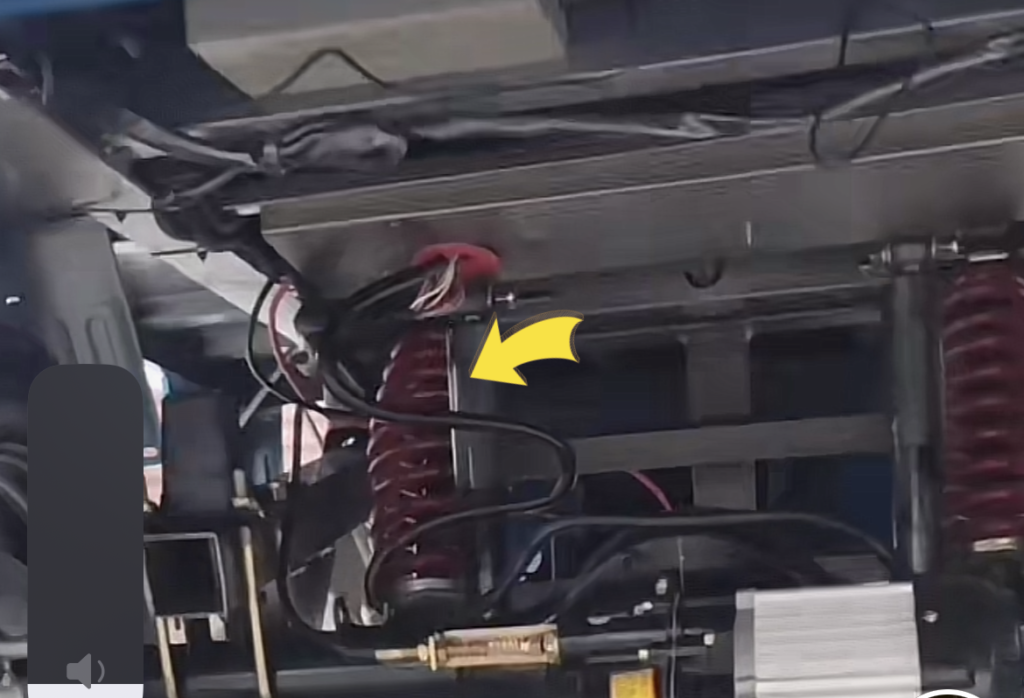
In partnering with us for your electric tricycle needs, you are ensured of a top-quality suspension system that promises durability, safety, and superior riding comfort. Entrust your needs with us, and experience the unparalleled service and expertise that set us apart in the electric tricycle industry.
Frame & Structure of Electric Passenger Tircycles
Material Selection
Plastic Frame (with Metal Base) E-Rickshaw
- Rising Popularity: These have become increasingly popular in recent years.
- Construction: Consists of a steel pipe frame enveloped by a thick plastic body and a metal base.
- Appearance: More stylish with a variety of designs.
- Flexibility in Design: Plastic’s malleability allows manufacturers to introduce multiple models yearly, a feat hard to achieve with steel shells.
- Battery Life: Lighter due to the use of plastic, leading to less energy consumption and longer battery life.
- Comfort: Offers better insulation from external temperatures, leading to a more comfortable ride.
- Durability in Harsh Conditions: Doesn’t face the rusting issues of steel. However, poor-quality plastic can deteriorate under intense sunlight.
- Price: Typically less expensive than steel e-rickshaws due to the reduced use of steel. However, some new models, given their superior aesthetics, might be priced higher, especially if they feature better interiors and accessories.
Steel Shell E-Rickshaw
- Historical Significance: Steel shell tricycles have a long history.
- Construction: Features a unified metal body, ensuring a high frame strength.
- Safety: Generally offers better safety due to its robustness.
- Temperature Conduction: Metal conducts temperature more effectively, which means the interiors can quickly become cold in winters or hot in summers.
- Durability in Humid Regions: In rainy and humid areas, steel shells can rust and corrode.
- Body Strength: In minor collisions or scratches, steel shell tricycles offer better protection. However, in significant impacts, the difference between steel and plastic shells might not be substantial.
- Price: While steel e-rickshaws can be costlier because of the high price of steel, some plastic frame models can be more expensive due to their enhanced aesthetics and higher-end interiors.
Elevate Your E-Rickshaw: Personalized Features & Add-ons
Passenger tricycles aren’t just about transporting cargo — they’re about people. Every ride should be a blend of comfort for your passengers and a seamless driving experience for the operator. That’s why we offer a plethora of customization options, ensuring each journey is smooth, enjoyable, and tailored to individual preferences
Handlebar vs. Steering Wheel Control:
Handlebar Control:
- Pros: Exceptional maneuverability on tight roads and quick responsiveness in reverse.
- Cons: Less stability at higher speeds during turns.
Steering Wheel Control:
- Pros: Provides stable turning and maintains direction even on rough terrains without swaying.
- Cons: Steering mechanisms can wear over time, requiring maintenance.
Front and Rear Bumpers: Add an extra layer of safety and aesthetics to your e-rickshaw with durable front and rear bumpers.
Roof Luggage Rack & Spotlights: Maximize storage space with a robust roof luggage rack. For nighttime operations or off-road adventures, consider adding spotlights to illuminate your path.
Rearview Camera: Ensure safer reversing and parking with a high-definition rearview camera, providing a clear view of any obstacles behind.
- Hill-Climbing Mode (Optional):If you frequently travel on uphill sections, it can give the tricycle more power when climbing.
Solar-Powered Rides: Harness the Sun for Extended Journeys
Enhance your electric rickshaw with rooftop solar panels. Harness solar energy for continuous charging, ensuring longer rides and eco-friendly efficiency.
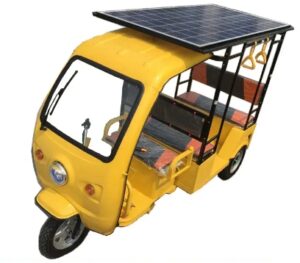
Explore an array of additional customization options tailored just for you. At AGL-Trike, we embrace your unique needs, offering an extensive selection beyond the standard, to truly create a trike that resonates with your style and functional preferences. Intrigued to learn more? Reach out to AGL-Trike, and let’s embark on this journey of bespoke design together.
Brake System Guide of Passenger Electric tricycles
Selection of Brake Types
Drum Brakes
Characteristics:
- Budget-Friendly: The production and maintenance of drum brakes tend to be less costly.
- Effective Stopping: Designed to deliver a pronounced braking force in certain situations.
- Typical Applications: Predominantly used in high-load vehicles, such as cargo tricycles, to ensure effective braking.
Limitations:
- They fall short in heat dissipation compared to disc brakes, heightening the risk of overheating.
- There’s a potential for a slight delay in response time.
Disc Brakes
Characteristics:
- Efficient Heat Dissipation: Disc brakes stand out in their ability to dissipate heat, which aids in fast cooling and lessens overheating concerns. Their long-term upkeep might balance out the initial investment.
- Prompt Braking: Ensures consistent and instant stopping force.
- Ideal Applications: With their superior heat handling and promptness, disc brakes are commonly chosen for vehicles that demand high-performance braking.
Limitations:
- Upfront costs can be on the higher side.
- Might necessitate more consistent maintenance checks.
Application and Standard Matching of Brakes
In the realm of electric three-wheeler loaders, drum brakes are frequently preferred, and here’s why:
Budget-friendly: Relative to other brake types, drum brakes offer a more cost-effective manufacturing process. This price advantage resonates with both makers and consumers in a market that values high return on investment.
Endurance with Easy Care: The simplicity and durability of drum brakes translate into fewer maintenance hassles and longer intervals between replacements. This ensures uninterrupted and smooth operations for electric three-wheeler loaders.
Suitability: Designed to accommodate higher braking torques, drum brakes align perfectly with the requirements of electric three-wheeler loaders that often handle weighty cargo.
There are various brake configuration options, as follows:
Summary: All three wheels are equipped with drum brakes.
Benefits: Drum brakes offer better performance in conditions like water and mud compared to disc brakes, guaranteeing steady performance across different terrains. They tend to be more economical and require less frequent maintenance.
Best Suited For: Riders who value consistent braking in varied environments and conditions without the necessity for rapid, forceful stops.
2. Front Disc & Rear Drum Brakes Setup:
Summary: The front wheel is fitted with a disc brake, while the rear wheels utilize drum brakes.
Benefits: This mix provides the immediate response of a front disc brake coupled with the reliable performance of the rear drum brakes. It achieves a balance between cost and enhanced stopping power at the front.
Best Suited For: Those aiming for more braking precision at the front, yet wanting to maintain the trustworthiness of rear drum brakes.
3. All-Wheel Disc Brakes Configuration:
Summary: Disc brakes are mounted on all three wheels.
Benefits: Disc brakes deliver superior stopping capabilities and efficient heat dissipation, especially during demanding braking moments. They ensure consistent braking across diverse conditions and have a swifter response time.
Best Suited For: Enthusiasts who demand the highest in braking performance, particularly in situations requiring quick stops or when navigating downhill terrains.
Choose ALG Trike, one of the leading electric trike manufacturers, can ensure not only safe and stable braking but also accommodate various driving and loading demands.
Tire and Wheel Hub Essentials
Tire selection for a 3-wheeler electric rickshaw
Tire Size: For example, if the tire parameter is “3.0-12”, where “3.0” represents the tire width, and “12” indicates the inner diameter of the tire. Generally, larger sizes are more expensive. For instance, a 3.0-12 tire will be pricier than a 3.0-8 tire.
Tire Material: Mainly, there are two types: Radial tire and Bias tire.Radial tire due to their strength, exhibit superior durability, especially under heavy load and long-distance driving. If comfort riding is the preference, Bias tire would be sufficient.
Tire Ply Rating: Common specifications include 4PR, 6PR, 8PR. These ratings represent the tire’s load-bearing capacity. The more the ply number, the stronger its load-bearing capacity will be.
Tire Shape: Tires mainly come in two shapes: flat-top and arched. Flat-top tires are thicker and more wear-resistant, suitable for bearing larger loads; whereas arched tires provide a more stable riding experience. Therefore, some three-wheelers might opt for arched tires in the front and flat-top tires in the rear.
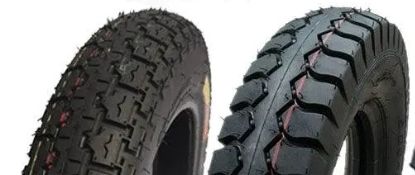
Wheel Hub Material
Aluminum Alloy Wheel Hub: Aluminum alloy is popular for its lightweight, high strength, and good corrosion resistance. It can provide better heat dissipation, helping to reduce brake overheating, and offer a certain degree of weight reduction for the vehicle.
Steel Wheel Hub: Steel is a heavier but very sturdy and durable material. This type of wheel hub typically costs less, its heavier weight may slightly sacrifice some performance.
Tires are the only point of contact between the electric tricycle and the ground, making the choice of suitable tires crucial. For smooth roads, we recommend choosing tires with low rolling resistance and a softer composition, offering better comfort and energy efficiency. On rugged or muddy terrains, tires with deep treads should be selected to ensure good traction.
Transport Packaging at AGL-Trike
Vehicle Delivery Packaging
At AGL-Trike,as a passenger tricycle manufacturers in china,we pride ourselves on our attention to detail and our commitment to the highest quality in every aspect, right down to our packaging. To provide our clients with a visual understanding of our professionalism, we showcase several standard full-vehicle delivery packaging methods. Our approach ensures the utmost safety and protection for the product, ensuring it reaches you in pristine condition.
Basic Standard Sponge Packaging
Wooden Frame Packaging
Metal Frame Packaging
- Metal Frame with Wooden Crate Packaging

More Custom Packaging Options
Understanding that each client might have specific needs and preferences when it comes to transporting and assembly, we offer a range of packaging choices:
SKD (Semi Knocked Down): This packaging method involves partial assembly. Major components are packed separately, offering a balance between ease of transportation and reduced assembly effort at the destination.
CBU (Completely Built Up): The vehicle is fully assembled and ready for immediate use upon arrival. This method is ideal for clients who prefer a plug-and-play solution without the need for post-shipment assembly.
CKD (Completely Knocked Down): This involves a complete disassembly of the vehicle. Each component is securely packed individually, ensuring compactness and efficiency during transportation. This method is perfect for destinations with specific import regulations or for clients who have specialized assembly capabilities in-house.
By offering these diverse packaging options, we ensure that our clients can select a method that aligns perfectly with their logistics, assembly capabilities, and preferences. Our goal at AGL-Trike is to make every aspect of your purchase, including transportation and packaging, as seamless and tailored as possible.
FAQs on Wholesale and Customization of Cargo Electric Tricycles
What are the MOQ of the Order?
For optimal shipping cost, we advise filling a 20GP container. However, orders not filling a container are accepted with a note of higher shipping costs. Mix 1-2 different tricycle styles in a single container for variety and cost efficiency.
Ensure you get the best in shipping, cost, and variety with our flexible MOQ and shipping options.
What is the expected lead time?
For standard models, expect a lead time of 15-25 days. For special custom orders, delivery times are estimated based on your specific requirements, ensuring you know when to expect your order, and can plan accordingly.
What is the warranty period for your electric tricycles?
We offer a 1-year warranty for our electric tricycles, covering any non-man-made damages. Rest assured that we stand behind the quality and durability of our products, providing you with reliable post-purchase support.
Do you ship internationally?
Yes, we ship our cargo electric tricycles worldwide with trusted logistics partners.
Are your electric tricycles certified and compliant with international standards?
Absolutely, our tricycles adhere to international safety and quality standards, ensuring reliability and safety for all our customers.
How is the after-sales service?
We provide comprehensive after-sales service including spare parts supply, technical support, and other assistance to ensure the smooth operation of your electric tricycle.
Kickstart Your Project Now!
Got a project in mind or a question to ask?
Don’t wait! Our team is ready to help.
We’re committed to responding within 12 hours.
- +86 18367809612(Whatsapp)
- info@agl-trike.com
We will contact you within 12 hours, please pay attention to the email with the suffix “@agl-trike.com”.



